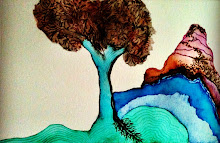
http://www.youtube.com/watch?v=Iv5HxoFb_3g
From youtube site:
The mirror house at Tsogyelgar was envisioned by Traktung Rinpoche after the one created by the monk Fa-tsang in Tang Dynasty China. Fa-tsang (643-712) was one of the great Buddhist teachers of East Asia. Among his students was the Empress Wu Tse-tien, an avid beginner. She had difficulties understanding abstruse Buddhist doctrines such as the dharmadhatu—the way all things reflect and interpenetrate all other things without ever coming into obstruction with them. So Fa-tsang built a physical representation of this reality in the form of an eight-sided chamber whose walls, ceiling and floor were covered with mirrors. In the center was an image of the Buddha and a single candle. Once inside the room, the Empress seemed to disappear, leaving only infinite reflections of the Buddha, extending in all directions at once. Non-obstructive mutual interpenetration was no longer a concept, but a visual reality for her.
At Tsogyelgar the candle and image of the Buddha have been replaced by a color-shifting LED and clear resin cast of Guru Rinpoche. The central statue rests on a pillar itself covered with mirrors, and the intensity of light is similar to that of the original candle. The experience of sitting inside it may not fit readily into words.
Music by Ryan Vanderhoof
For more on this see Eugene Yuejin Wang's article "Oneiric Horizons and Dissolving Bodies: Buddhist Cave Shrine as Mirror Hall." at:
http://www.fas.harvard.edu/~eaah/people/core_faculty/eugene-wang.html

No comments:
Post a Comment